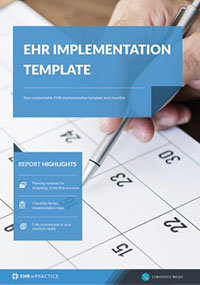4 Tips for a Successful EHR Data Migration
Migrating data from the old system to the new EHR system is critical for successful implementation in your practice. Without proper input of existing patient data, your clinicians will not be able to access medical health records, lab values and other necessary tests. Proper data migration reduces clinician frustration and improves user buy-in.
The data migration process is usually easier for practices that are moving data from one electronic system to a new EHR system, since most of the information is already in electronic form. However, for practices that are moving from paper charting to electronic systems, much of the entry is done manually and can be very time consuming. There are strategies that should be taken to ease this process:
1) Define Your Migration Parameters
Many offices hold years of patient records and files. You must determine what exactly you would like input into your system. How many years or months do you need backed up into the system. Do you only input current patients into the new EHR system and refer to paper charts for past clients. In addition, do you enter each client by hand, or do you simply scan past tests/imaging into the system. By determining exactly what you need, you will be able to concisely narrow down what needs to be input. Begin with today’s date and move backwards. Likely, patient records from five years ago will not need input into your new system. Think about how often you have accessed historical records in the past and prioritize. Remember to account for your “frequent flyers” - those patients who come in and out of your office regularly.
2) Develop New Workflows and Training
Determine who will be the point person for inputting past records into the new system. Be sure to allocate plenty of time for this project, as their other work duties will be stalled. Create a workflow sheet for unmistakable clarity as to data entry requirements. Once you have determined who will take on this task, ensure proper training so that person knows what documents are important and what has little value. Typically, this person will be an office manager, receptionist, or assistant, as your clinical staff will not have time due to patient care.
Recommended Reading: EHR Vendor Directory - Not at the implementation stage yet? View our comprehensive guide to EHR vendors
3) Check and Double Check
Ensure that all patient information is input correctly and do not shred anything for several months. You want to ensure that your new system is properly running and that you have all necessary information. Once you are confident that all necessary documents have been captured, then you can properly store away or destroy old charts.
4) Storing of Paper Charts
Look at your practice regulations in regards to the required time to store medical records and information. Some records will likely need to remain in storage for access at a later date.
There will likely be other areas crucial to your practice conducting a successful EHR data migration. But by considering these four tips when planning for your data migration the odds should be stacked in your favour for a successful implementation.
Free white paper

EHR Vendor Directory
Get the most up-to-date directory of EHR software vendors. Find the best software for your practice.

Featured white papers
-

EHR Implementation Template
Get all the planning tools you need to make your EHR implementation a success
Download -

EHR implementation: 6 steps to success
Step-by-step information on how to implement EHR effectively
Download -

EHR Vendor Directory
Get the most up-to-date directory of EHR software vendors. Find the best software for your practice.
Download
Related articles
-

EHR Implementation Plan: Your 8-Step Checklist
Your comprehensive checklist for creating an EHR implementation plan.
-

A template for your EHR project implementation timeline
Determining your EHR project timeline will prove tricky, but having some expectations of time fra...
-

5 important areas of EHR training during implementation
Successful EHR implementation is not possible without crucial EHR training

